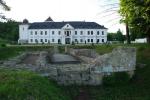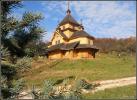To the monastery in Univ and Pochaiv
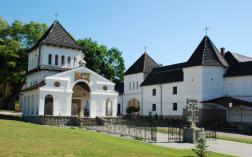
Designation: To the monastery in Univ and Pochaiv
Route:
Duration: 1
Price:
Description
Itinerary
Prices and dates
Information
Travel reservation
Places of interest
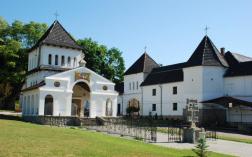
The Univ Monastery is surrounded by a beautiful Pre-Carpathian landscape that combines hilly terrain, verdant valleys and fertile fields. Although the exact date of its foundation remains unclear, Univ was mentioned in the early 14th century archival documents as the spiritual center of Galicia. However, that center of spiritual life was attacked by the Tatars in the 16th century. Legend has it that the Mother of God appeared in a dream to the Ukrainian nobleman Alexander Lahodovskyi who was sick. She advised him to go to the east of his estate in order to find a healing spring, wash himself and be cured. Thus Lahodovskyi came across the ruins of the Monastery in Univ. After his miraculous healing, the nobleman made a vow to rebuild the monastery. In the 16th century a brick defensive church was built over the spring. Eventually there were built four corner towers and walls. This unique Church and the defensive Monastery remain extant today. For centuries the Univ Monastery fortress was not only a religious place but also the center of culture and enlightenment as there operated a printing house.
In the 19th century the ditches and ramparts were levelled, the corner towers on the eastern wall were dismantled and a magnificent palace appeared on the site of the southern wall. Despite the reconstructions, the historical structure of the 16th century Monastery complex with the Church of the Dormition of the Most Holy Mother of God was preserved in the monastery courtyard. The Status of Lavra was granted to the Univ Monastery by Metropolitan Andrey Sheptytskyi. Pilgrims remember Univ with pleasure, because they can find peace of mind in this holy place.
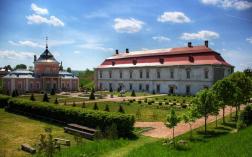
Zolochiv Castle was built in the early 17th century as a defensive fortress in accordance with existing requirements of the science of fortifying and according to the Old Dutch system. It was commissioned by Jakub Sobieski, father of John III Sobieski, the future King of the Polish-Lithuanian Commonwealth.
There are two palaces in the castle courtyard: a two-storey Grand Palace in the Renaissance style and the Chinese Palace located in front of the entrance tower.
The Castle witnessed a great love between John Sobieski and his wife Queen Marie Casimire. She often stayed at Zolochiv Castle in 1690s. He fell in love with a beautiful French woman at first sight. Eventually she became Queen of Poland and had a great impact on John III Sobieski. They said that Marie ruled over John and John ruled over Poland. Their love lasted until the death of the King. A large collection of correspondence, including more than 3,000 tender letters from the king to his wife, is the proof of their true love.
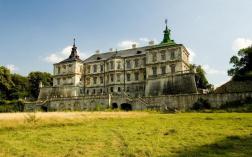
Pidhirtsi Castle, an architectural monument of the 17th century, is an architectural jewel of European importance. It’s a perfect combination of an imposing palace and fortress (Palazzo in Fortezza). The Palace was commissioned by Stanisław Koniecpolski, the Grand Crown Hetman of the Polish-Lithuanian Commonwealth who was the owner of Pidhirtsi. It was built between 1635 and 1640 to the project of the architect Andrea dell’Aqua. The project of fortifications was designed by Guillaume de Beauplan, an engineer and architect of fortifications.
The stunning opulence and splendor of the palace halls attracted the European monarchs at different times: King Władysław IV of Poland, King John III Sobieski of Poland, Emperor Francis Joseph of Austria, Kaiser Wilhelm of Germany and Emperor Peter the Great of Russia. However such events are left in the past. At present the restoration works are conducted at a very slow pace due to lack of funding.
The architectural ensemble of Pidhirtsi Castle consists of the 18th century Hetman Wayside Inn, Catholic Church of the mid-18th century (architect K.Rymlyanyn) and the Italian style Park established in the 17th century which appeared to be a real masterpiece of park architecture.

The Pochayiv Lavra is the largest Orthodox shrine in Western Ukraine and the second largest in Ukraine after the Kyiv-Pechersk Lavra. Researchers usually refer to the following two periods of the origin of the Orthodox Monastery on the territory of the present-day town of Pochayiv, and that eventually became a Lavra: “the Pre-Tatar period” and “the Tatar period”. According to the first version there lived a devout man Turkul at the foot of Pochayiv Hill in the late 12th century. He and another monk from Mount Athos began to build the monastery on Pochayiv Hill. Another legend has it that the monastery was founded by the monks of the Kiev Pechersk Cave Monastery who fled from Kyiv during the Tatar-Mongol invasion in 1240. Caves located deep within the hills served as the first premises for the monastery. The first building was a small wooden Church of the Dormition of the Mother of God, built in the 13th century. According to the legend, the Mother of God appeared to the monks in a pillar of fire over Pochayiv Hill and left an imprint of her foot on one of the rocks. The real history of the Pochayiv Monastery dates back to no earlier than the late sixteenth century. Anna Hoyska, the owner of Pochayev, funded the Monastery on November 14, 1597, having granted a corresponding letter. She also granted to the Monastery over 200 acres of arable land, grassland and forests. She allotted an annual sum and a tenth part of the grain to the Monastery.
The Ensemble of the Pochayiv Lavra, that crowns Kremenets Hills, conspicuously dominates the landscape. Its golden cupolas can be seen from far away and the bell-ringing can be heard many kilometers away.


